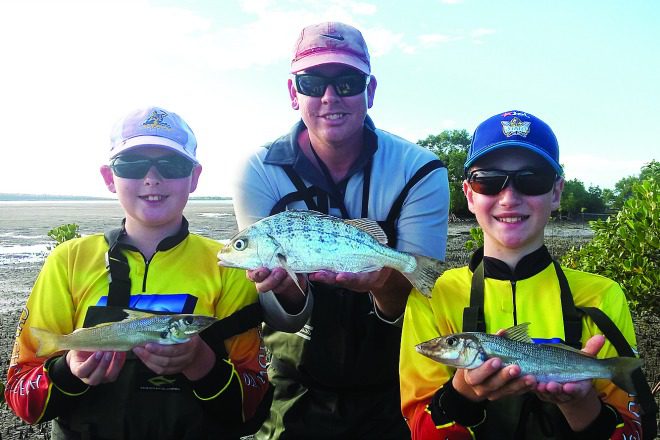The lesson out of this trip is for anglers with families or partners not as keen on fishing as you to know that it is possible to cram great beach and flats fishing in between sightseeing and fun in four or five days at Fraser or K’gari.
FOLLOWING on from last month and my annual Fraser Island trip with ‘the boys’, I was lucky enough to return to Fraser with my family and friends in the September/October school holidays.
Both our friends and their three kids as well as my two boys were making their debut on Fraser. K’gari aptly means ‘paradise’ to the island’s traditional owners the Butchulla people.
Everyone happy
Despite some pre-trip ‘advice’ from my better half to “remember this is a family trip, you’ve had your boys’ Fraser fishing trip”, eight rods were loaded on the four-wheel-drive ‘just in case’.
This was to cover beach and flats fishing scenarios for my boys and me.
With a bit of careful studying of weather forecasts, tides and my fishing diary of Fraser trips, I pre-planned three sessions including an all-dayer on the western side that would fit around a jam-packed itinerary. These were timed so the mums could take the youngest kids to Lake McKenzie and inland while the dads and two eldest boys fished the western side flats, along with two dawn sessions for tailor where we would return in time to start the day’s sightseeing.
Staying at Eurong Beach Resort rather than camping for our kids and family friends’ debut trip meant there was no concern about dingoes (due to the perimeter fence) or 4WDs, so the kids played cricket and footy outside and also had the options of tennis and swimming. This kept the mums and kids happy – big tick!
Sightseeing options
I planned our trip to maximise our time on the island even though check-in was not until 2pm on our first day. Leaving from River Heads at Hervey Bay, we caught the 6.45am ferry to Kingfisher Bay Resort to have us on the sand by 7.30am. This was perfect because it meant we had a relatively short trip to Central Station, the former logging station on the island. This location has a bit of history that you can read up on while there and some artefacts to check out.
We then took the must-do walk along the crystal-clear Wanggoolba Creek, which runs through the beautiful rainforest. We actually tracked on further to Pile Valley, the home of giant satinay trees and brush box.
To be honest though, for families with young kids I’d just stick to the creek walk because the trek to Pile Valley and back, although beautiful, is just that little bit far for them. Next stop was Lake McKenzie and it didn’t disappoint.
The beautiful aqua water and white sand really make you feel like you’re in paradise. After the boys had a swim and lunch, we arrived in plenty of time to check in and unpack. The mums and young kids then relaxed while the Dads and elder boys went off fishing for tailor.
Over the next few days we also took a day trip to the Champagne Pools, which are a couple of naturally formed swimming holes behind the front edge of the rocks. A special treat at this spot was the number of whiting, bream and other species the kids could swim around and study.
On the way to the pools we stopped at the Maheno shipwreck, the Pinnacles (beautifully formed coloured sand cliffs) and Indian Head. In my opinion, Indian Head is the jewel in the crown of spectacular views at Fraser Island.
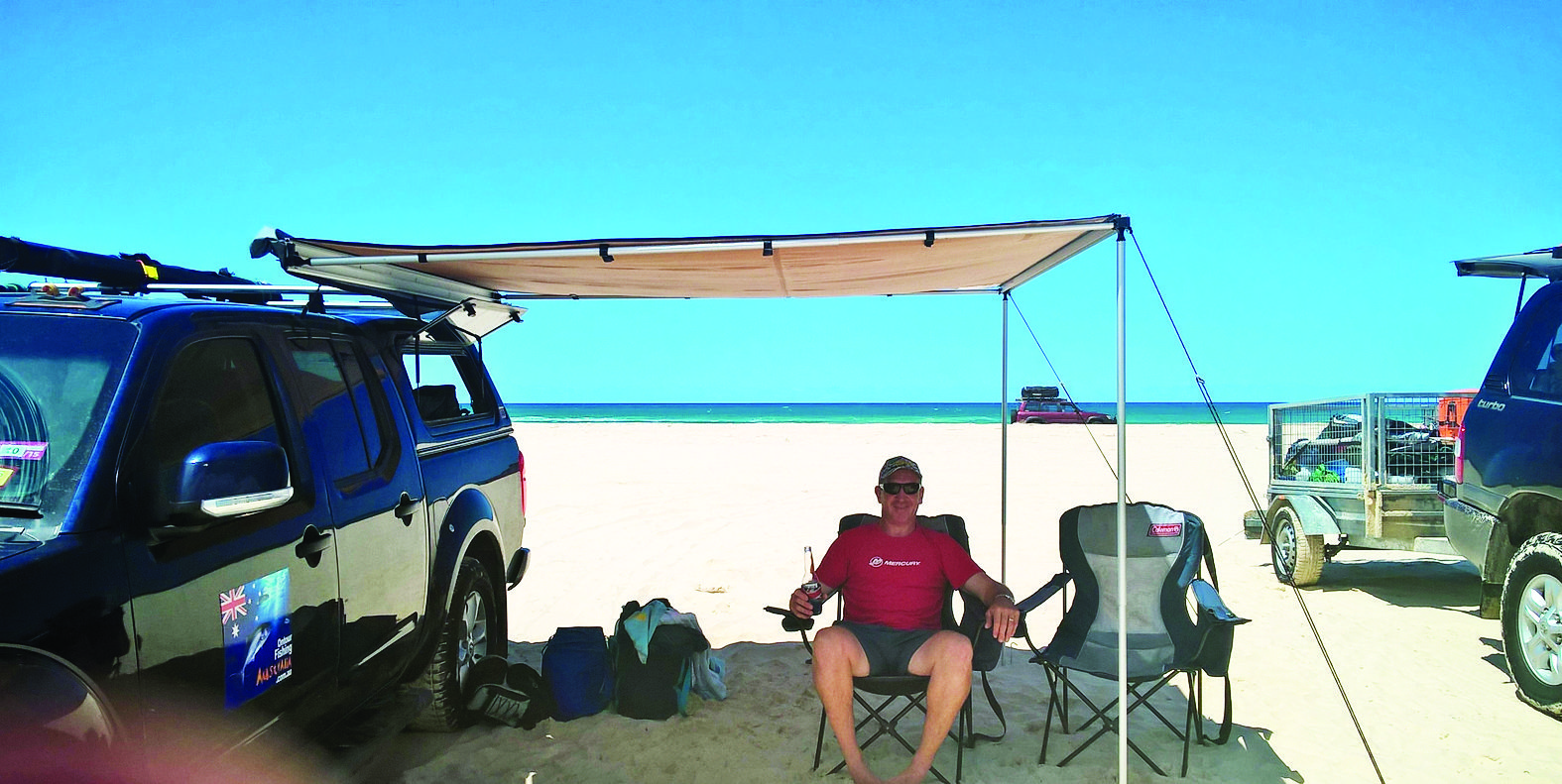
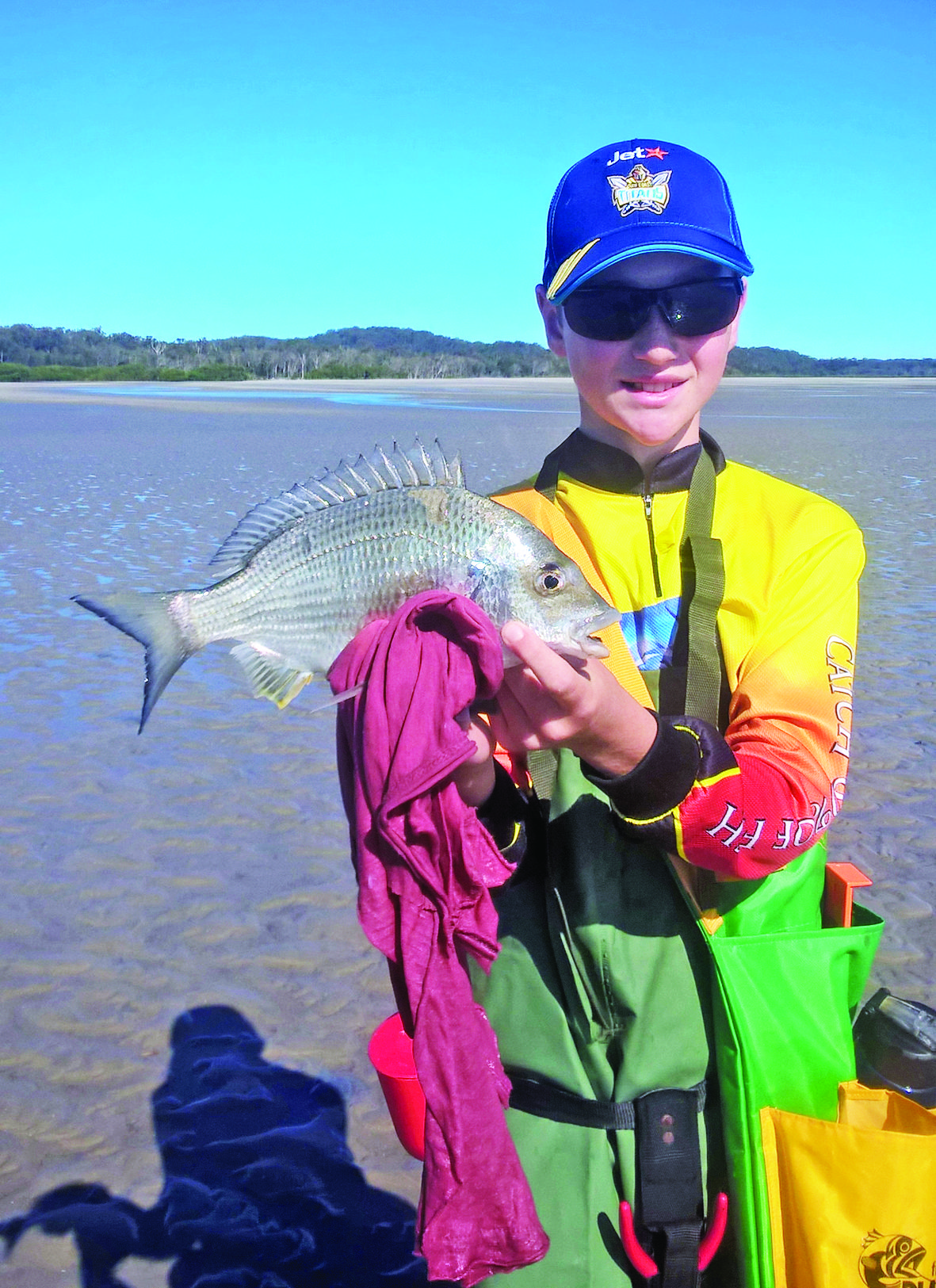
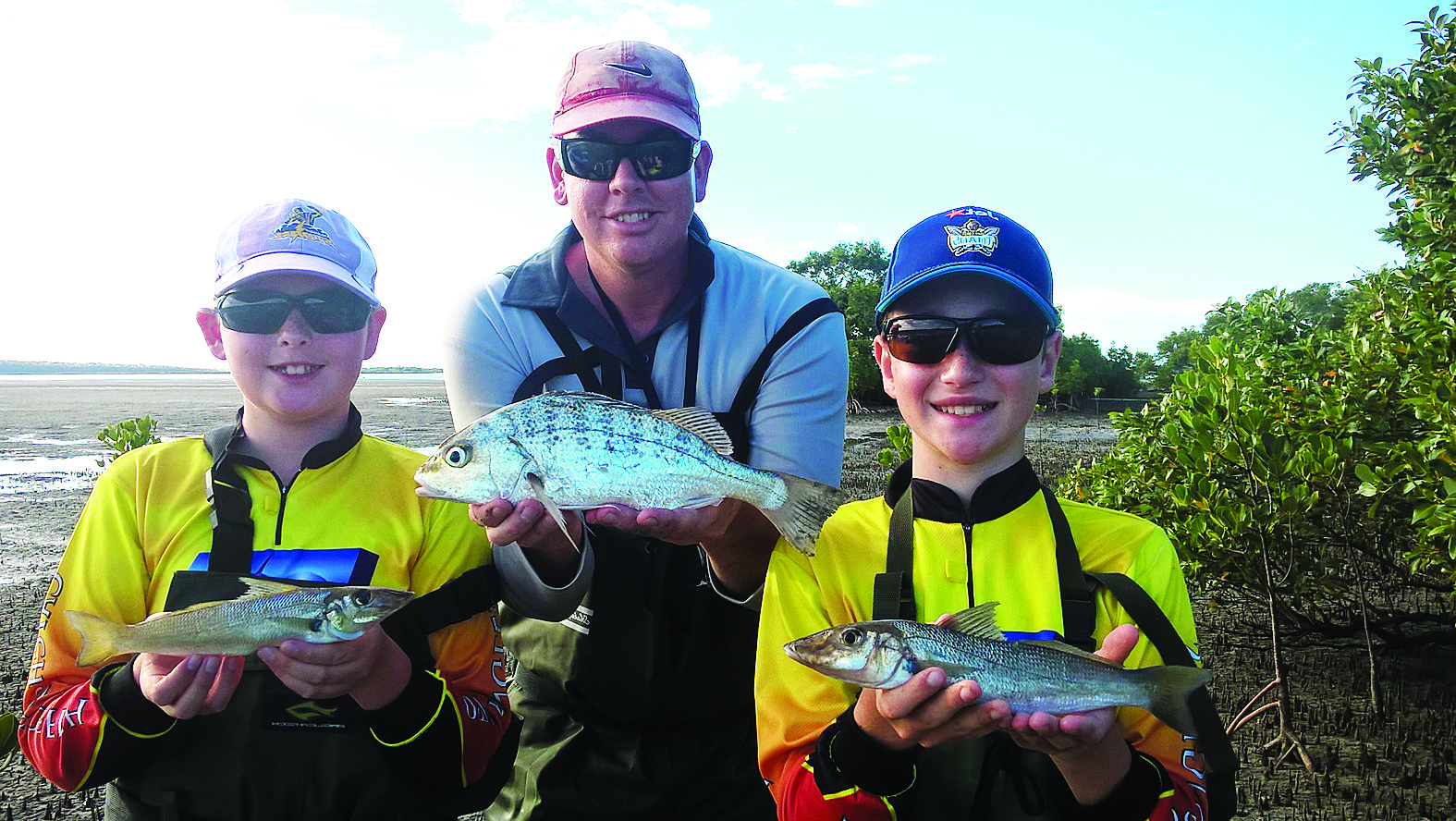
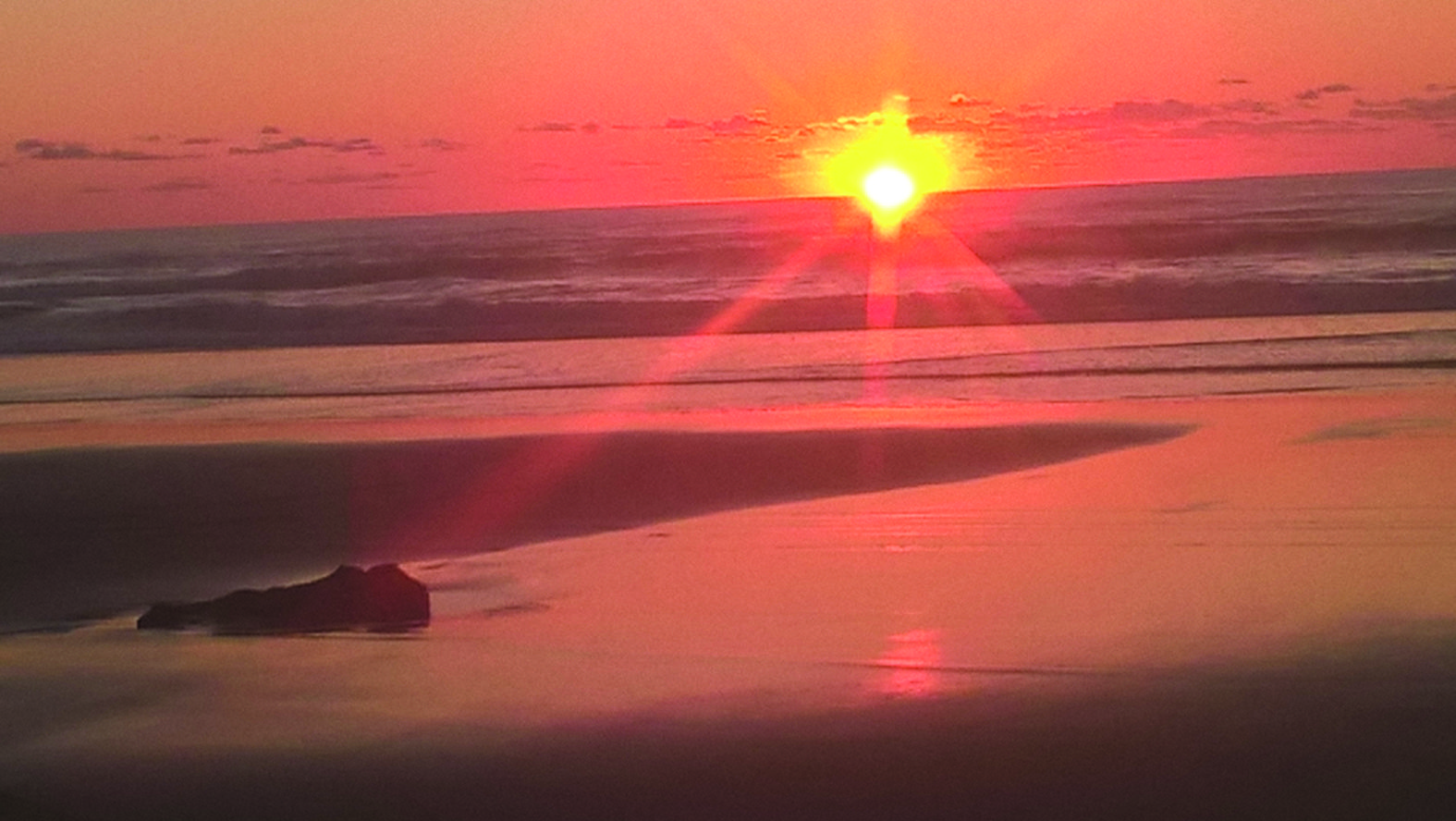
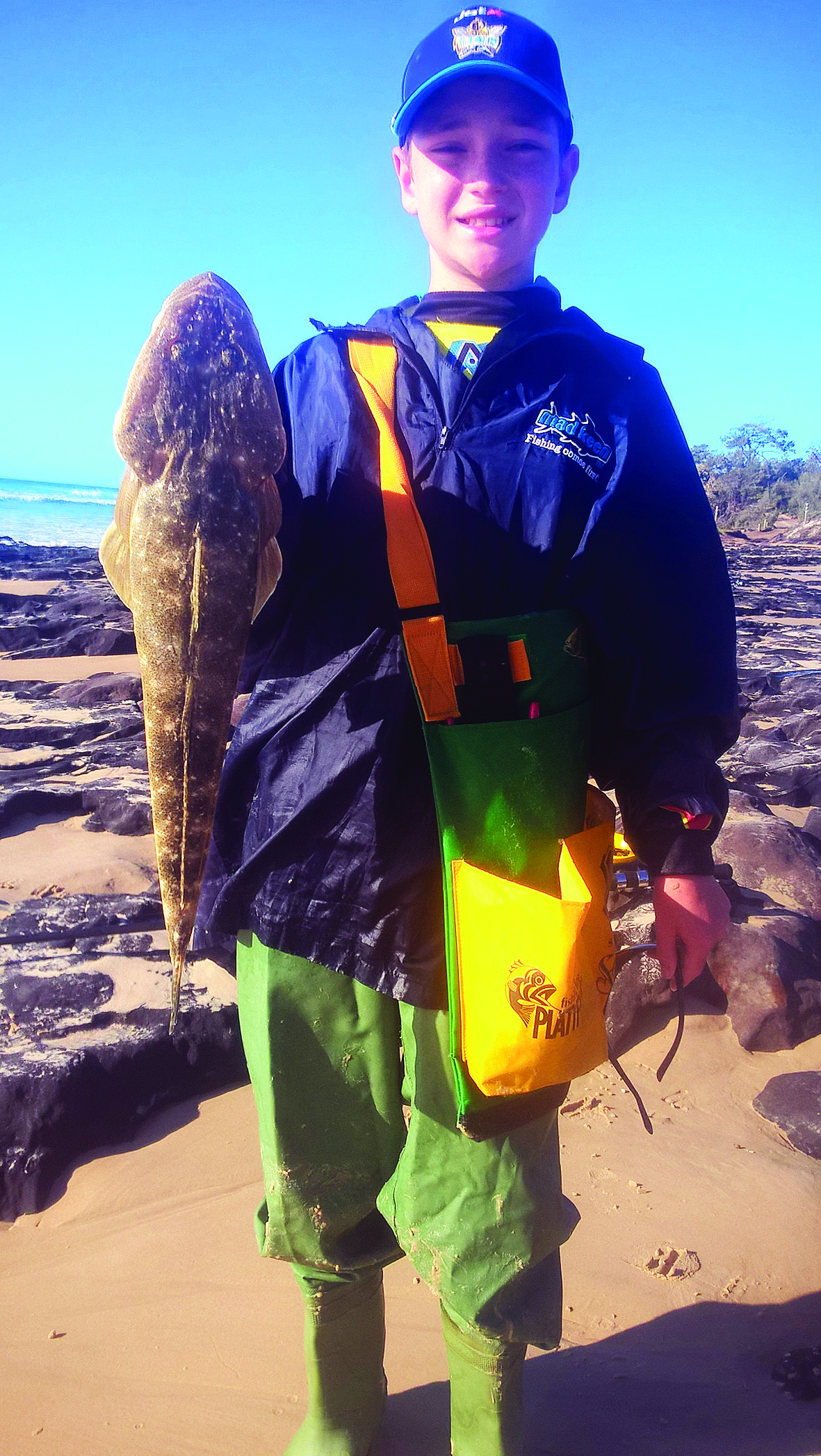
It gives you the most beautiful views of the beach to the north and south as well as regular offshore displays from whales and often sharks, dolphins, turtles and pelagics close to the rocks. Please take care though and stay back from the edge because there is no fence.
We also did a couple of trips to Eli Creek, which is a great spot for the kids to float down the clear shallow water on float tubes or boogie boards towards the beach.
The day before our trip to the western side, while the mums watched the kids at Eli, the dads chased beach worms directly in front, and they were in abundance. It was a bit like being the Pied Piper as backpackers and other inquisitive tourists came down to see why we were swishing a net full of fish frames by the water’s edge and were amazed to then see five-foot worms being extracted. A trip to Lake Wabby (a bit of a trek for young kids but a great spot for a swim) and Lake Birrabeen (similar to but less busy than Mackenzie) rounded out our sightseeing.
Some bonuses
There are always bonuses on Fraser Island no matter what time of year you go. This year we stopped on the way to Indian Head and were amazed as we saw two huge water spouts doing their dance out near the horizon.
On top of that, some of you might recall fondly the days when F-111s used to buzz anglers lined up along the beach with their flying practice under the radar. Well this year I was astonished to be filleting our catch on the beach only to hear an almighty roar coming towards me on the beach. I looked up and there was a giant grey Royal Australian Air Force Hercules plane roaring towards me at what seemed like only a stone’s throw from the ground.
The kids were also chuffed when on our last night we drove just south of Eurong’s second valley and came across four inquisitive dingo pups just on dusk.
Cute is never a word I have associated with dingoes over the years, but I must admit I had to agree with my family’s assessment that these pups really were quite cute, at least to look at from afar. I’ve no doubt Mum was hiding just beyond the dunes. Not that you should ever interact with dingoes.
The fishing – tailor action
Having had my fill of tailor fishing in my annual August trip, the focus of this trip was to get Dan’s and my eldest boys onto their first tailor.
We had a dusk session and two dawn sessions, which was more than I’d planned for, which was great. Because our sessions were about mid-tide, the water was coming in fairly quick and we had to wade out a little way in the shallows before casting the big 13’ rods.
If the gutters had had a beach break into clean green water it would have been fine for the boys in their waders to try a 10’ rod and cast themselves, but the conditions were such that we needed the big heavy rods to get the baits out to the back of the bank where the fish were.
That said, we gave the boys the rods to hold after casting out. The boys managed a few tailor each in every session, which was a great start for them. They loved the fight and surprisingly even being out on the water at dawn.
Over the three sessions we got a mix of fish sizes including two quality fish of 55cm and 57cm and 1.3kg cleaned and gilled. As a bonus, my son also got a lovely 60cm dusky flathead, which is a very good size for the beach, particularly when devoid of any estuary entrances close by. But the most telling part was that upon filleting the flathead we found a number of pilchard heads and other pieces of pillies.
I had asked my son to chop up and throw them out as berley because the tailor were a little thin. It was a valuable lesson in the benefits of beach berley because the flathead was caught on the inside edge of the gutter, not out the back where the tailor were initially caught. Furthermore, the berley also seemed to draw the tailor in closer as the session went on.
Being pre-teens, there was something else the boys thought was fairly cool that we as adults take for granted. When they reeled in the line after a bite to find the pilchard bitten in half with its stomach gone, the boys took a moment to study the inner workings of the pilchard as if it was a science class. In many ways fishing can be like a science class for children – an open-air lesson on life and its surrounds.
It’s just another reason to take your kids fishing.
Tailor rigs
The rigs used were standard Alvey bait casting rigs. Always run your sinker between two swivels with an Alvey because the swivel above your sinker helps to avoid line twist. Add a soft green luminous bead between the sinker and the knot on the bottom swivel too because it cushions the impact of the sinker on the knot when casting.
I then use a small 25cm fluorocarbon trace of 30lb (or more if fishing at night) between the gang hooks and the first swivel and then a 70cm trace to the top swivel. I run a range of sinkers between a 6 ball and a 10 ball. Then I coil the rigs in a small snap-lock bag. Wrapping your gang hooks in alfoil helps prevent the rigs from tangling up.
Finally I mark the bags with a permanent marker indicating the line strength and sinker size.
While fishing I carry a few of these different size sinker rigs in an Alvey dry pack on my bait belt for quick and easy re-rigging at the water’s edge rather than wasting time trudging back and forwards to the 4WD.
While on that topic, ingrain in your kids or newbies to Fraser Island to stop and look both ways before heading back to the 4WD or down to the water from the car because it is very hard to hear oncoming traffic when you are by the water’s edge. Also consider getting the kids to wear a fluoro vest ($6 from Big W) for added visibility.
The best time saver in my rigs is using 4/0 Tru-Turn gang hooks that come with swivels between the hooks and in pre-ganged sets of five to a packet. These rigs make ganging up even with frozen pillies a breeze. There’s no twisting stiff standard gang hooks backwards and forwards just to get the things to sit straight along the pilchard.
Of course you can add swivels in between your standard Mustad 4202D open-eye hooks when you gang them yourself but this all takes time and they lack the Tru-Turn cam technology that turns upwards into the fish’s mouth on contact. The Tru-Turns also come out much sharper in the pack and don’t need sharpening.
Western side flats fishing
Our dads’ and eldest sons’ day on the western side of Fraser was a defining and very proud moment for me and my friend Dan. It is a bit of an adventure driving over to the western side, with the road we take an educational journey in itself as I asked the boys to note the different types of landscape we drove past on this magic island.
The most impressive thing was that the boys lasted for over five hours on the flats with no grizzling. We then splintered off in pairs in two different areas and it really was an incredibly proud father and son bonding moment fishing side by side with our sons and with some great fishing action thrown in.
Best of all, the boys baited up, cast, de-hooked and measured each of their own fish, except for any gut-hooked fish or flatties. Even then I showed my son how to hold a flatty to avoid being spiked. The fishing was very successful using the whiting rigs I described in my article last month.
In brief: a size 6 light-gauge Tru-Turn hook, small pieces of red tubing and a trace of about 70cm for the boys up to a small trace between two swivels, a sinker and a soft green bead to cushion the impact of the sinker on the knot.
We caught 35 legal size fish, mostly whiting, with a few bream, tarwhine, long toms, flathead and a grunter thrown in. We released the bigger bream but kept a couple of feeds of the other fish for our families. In addition we landed a heap of undersize whiting, so the boys were kept very entertained. We fished the last four hours of the run-out tide, following the deeper drains out with the tide, and then the first hour or more of the run in.
Another bonus for the boys on the flats was again the outdoor science class their surrounds provided. A number of loggerhead turtles surfaced nearby while we fished and the boys, feeling confident and comfortable in their waders, learnt that as long as they treaded carefully, the big stingrays on the flats were more scared of humans then we were of them.
Everyone happy
All in all it was a great trip. Fraser Island is a fantastic destination for families (noting the precautions mentioned about the dingoes and 4WDs) or taking partners who aren’t super keen on fishing.You can get your share of excellent fishing mixed in with some awesome sightseeing to ensure everyone is happy.
For more tips, reports and giveaways, please jump on and like my Facebook page Ontour Fishing Australia.
Until next time, bag your mates, not your limit.
For more SEQ beach fishing tips, click here!
 Bush ‘n Beach Fishing Magazine Location reports & tips for fishing, boating, camping, kayaking, 4WDing in Queensland and Northern NSW
Bush ‘n Beach Fishing Magazine Location reports & tips for fishing, boating, camping, kayaking, 4WDing in Queensland and Northern NSW

